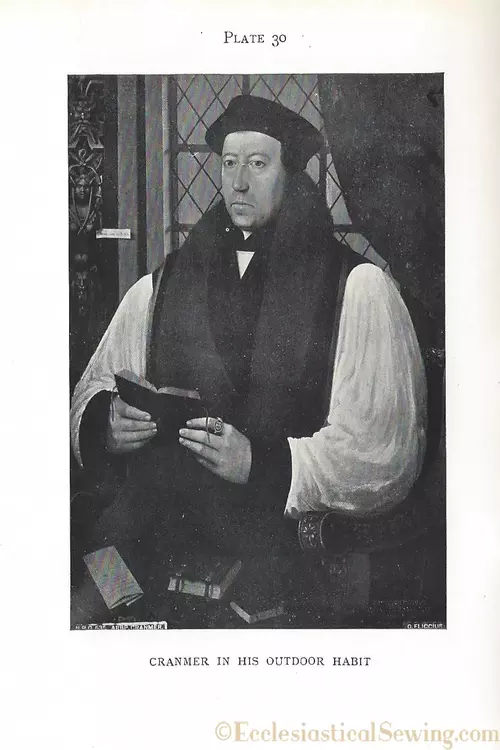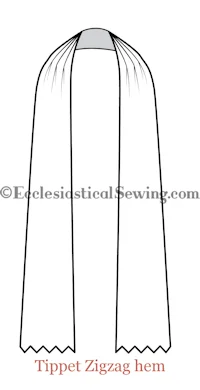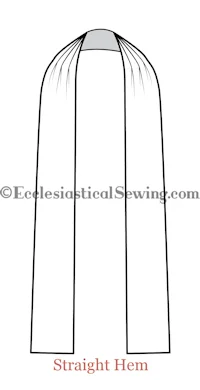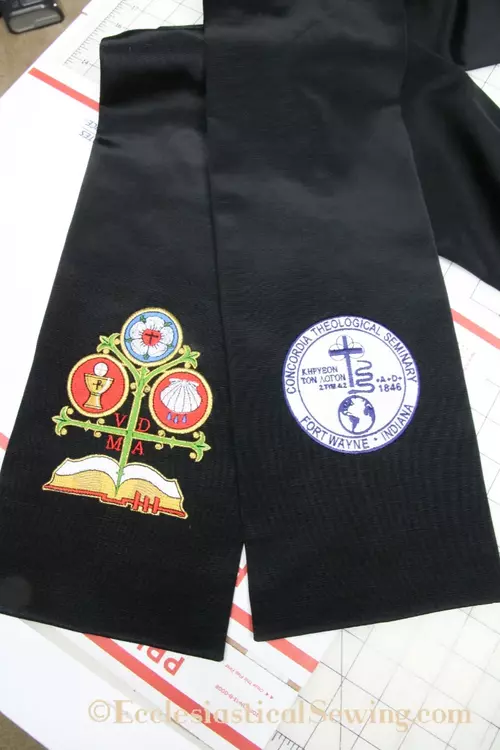What is a Tippet: Church Vestments
What is a tippet?
What is a Tippet: Church Vestments. A great question you may ask. For some, the answer has to do with fishing. We won’t look at the definition today as our focus at Ecclesiastical Sewing is always related to church vestments.
In the life of the church, a tippet is defined as a narrow cloth that is worn stole-wise around the neck and falls down over the shoulders and not a cape or hood. It is considered part of the choir dress. For those who might be interested in the history of the tippet and its use through the ages, I refer you to The Parson’s Handbook by Percy Dearmer.
The use of a tippet dates back to before the Reformation. The tippet is the church vestment that distinguishes the clergy in the choir from the choristers. Dearmer’s book provides references to the proper use of a tippet in the Canons and as with all things, the tippets’ use has changed through the centuries.
History
The tippet was originally a form of outdoor dress and it may have been fur-lined. Much of its history has been tied to academic use. Tippets have historically been made of silk fabric. As a matter of practical use in times before heated church buildings, there are references to lining the tippet with black woolen fabric to provide warmth for the wearer in winter, while in summer, very thin silk may be used. One only needs to look at the image above to see that this was historically a very practical garment that provided warmth at a time before the central heating of homes and churches.
The tippet is generally between 6″ to 10.5″ wide. The softer the fabric, the wider the tippet may be. The ends are usually finished with a plain simple hem. However, in the 19th century, the ends were finished with a zig-zag or pinked end.
Footnote Insight
In a footnote near the end of Percy Dearmer’s discourse on tippets, he denotes:
Thus there may be five varieties of the tippet: the thin silk for summer, the ordinary bengaline silk for winter months, and the lined or interlined for use in churches that are cold or draughty, of a non-silken material for bachelors and non-graduates, and of silk lined (or for coolness edged) with brown fur for bishops. Dearmer (1928) (p. 138)
An example of a tippet worn today is shown above. The tippet is usually gathered into a series of three pleats at the back neckline. It hangs in soft folds going over the shoulders and falls to within 2 or 3 inches above the hem of the surplice.
The tippet is often embellished with the theological school of the wearer. This logo may be placed on either the right or left side of the wearer. A symbol from their denomination may also be included on the tippet. It is equally fine to have the tippet unadorned.
The use of tippets varies with each denomination. Within my personal church, the tippet is worn by some for Morning and Evening Prayer services where Holy Communion is not served. Please check with your respective church rubrics for the proper use of the tippet within your synod or denomination.
Soli Deo Gloria
Tippet sewing patterns and Grosgrain fabric are available through our online store at Ecclesiastical Sewing. Custom embroidered tippets are also available through our store.
The Origins and History of the Alb
The Chasuble Percy Dearmer
Project Update: Rochet and Monastic Choir Alb
The First Chapter of a New Book
Sewing Tips: What is needed to make a Tippet










 RSS - Posts
RSS - Posts
You must be logged in to post a comment.